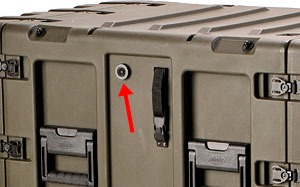
You’ve packed your delicate items in an airtight case to protect them from moisture and dust. Air can’t get in or out. That’s the purpose. But, what happens when the outside pressure changes?
Say you close the case in San Diego, then drive it over the mountains to Denver, Colorado. Denver is at 5,280 feet. But getting there involves going through the Eisenhower Tunnel, some 11,000 feet above sea level. At this altitude, air pressure is around 10 psi as opposed to 14.7 psi at sea level. Effectively, you’ve pressurized the case.
A 4.7 psi difference might not sound like much, but the case could start to deform. And, will burst open when the catches are released. And how about doing the journey in reverse? Arriving in San Diego, the case is at a negative pressure differential. It will be hard to open, but there’s also a very real risk of it starting to crumple.
Elevation changes aren’t the only reason for a pressure differential to develop. Just leaving a case in the sun can do the same thing. The air inside will heat up. And, because the seals are so good, the pressure will rise. The problem can be worse at night when cooling creates a partial vacuum.
The obvious solution—strengthening the case—adds weight and bulk. The smart solution is to use a case with a Pressure Relief Valve (PRV), also known as a breather valve.
A PRV allows just enough air to flow in or out to avoid any significant pressure differential. Typically, the valve opens when the differential exceeds 0.5 psi, letting the case “breathe”, then closes up. This lets a little moisture in. So, it’s important to put some desiccant in the case.
Many of the PRVs used by Sierra Cases have a manual release button. This allows pressure to be equalized before the case is opened.
For an airtight case that will be exposed to pressure changes, either through changes in altitude or temperature cycling, a PRV is necessary to protect it from damage. A case that is not airtight will not need a PRV.
Part 2: How a Pressure Relief Valve Handles Pressure Differentials